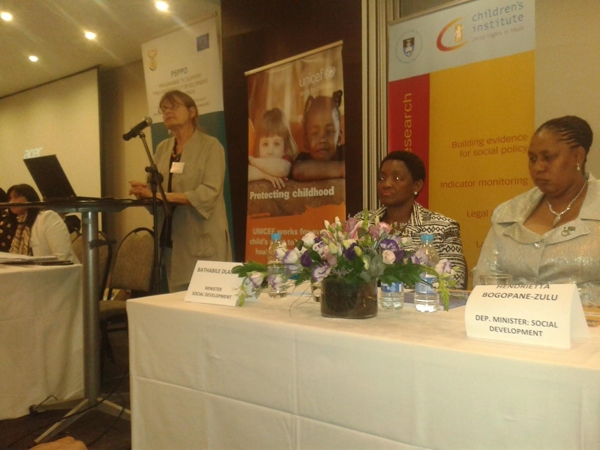Prevention strategies the key to curbing violence against children

“South Africa has no national statistics on violence against children,” says Shanaaz Mathews, director of the Children’s Institute at the University of Cape Town. In the absence of statistics, the South African Child Gauge looks at community-based studies. The 9th issue was launched in Pretoria on Tuesday.
“Our efforts of looking at statistics is not bringing about change,” says Mathews. “We know that violence can be prevented, but why is that not happening? We need to look at a number of factors … we need to increase investment in prevention. We need to start understanding the nature of the problem.”
This year’s issue of the Gauge focuses on the prevention of violence against children and is launched in time for the 16 Days of Activism for No Violence Against Women and Children.
The launch was attended by different organisations as well as the Department of Social Development. Minister Bathabile Dlaminin opened her address by saying that “more often than not violence against children is perpetrated by those who are supposed to protect them.”
Dlamini said South Africa was still a patriarchal country. “We need to encourage all men to stand up against violence and say enough is enough, but this will never make an impact without mobilisation. Government has done a number of things to prevent violence; last year, the sexual offences court was reintroduced; we have started a call centre for violence victims, including children; we are working on creating a social network platform where continuous discussions about this issue can be discussed; we have a gender based violence command centre. We are so happy with the work that the Children’s Institute has done and we want to continue our work with them,” said Dlamini.
Mbalenhle Chiya, a 21-year-old from Alexandra township, was part of a group of seven youths who attended the launch.
“Alexandra is filled with crime, violence and teen pregnancy. Although the launch was very informative, I feel like it would’ve been better if it was done in the community. In our communities violence against children is not talked about; we do not have access or know much about prevention of violence; there is no free space to talk about these issues. Growing up, we are taught that men are superior and should be respected. Where can we discuss this? Gays and lesbians are killed because of their sexuality. I just feel that this information should have been brought to the communities,” said Chiya.
According to the Child Gauge, violence starts in the home where young children witness domestic violence and are exposed to humiliating punishments. The impact of violence extends beyond physical scars and can cause long term damage. Much of the violence takes place within homes and in close relationships. Children don’t report it, and adults turn a blind eye, which allows the cycle of violence to continue.
Questioned on how this information would reach communities such as Khayelitsha, Nyanga and Manenberg, Human Sciences Research Council’s Mokhantso Makoae said there were seminars held regularly every month in communities.
On day two of the launch, representatives from government, civil society and other role players, were broken up into three groups to discuss preventing violence against young children, primary school children and adolescents.
The group on primary school children discussed five key points as part of recommendations to end violence: - Antenatal programmes to be established to help new mothers as well as to provide parental support and medical assistance to mothers; - An integrated assessment; - Sustainability and accessibility of support throughout a child’s life after undergoing violence prevention programmes; - An establishment of child abandonment programmes; and - Moral regeneration and public participation engaging with the communities about what should be done.
Mathews said major investment is needed in the social services workforce. Early intervention is essential. Budgets need to shift towards favouring pro-active prevention instead of always reacting to protect children after the violence has occurred.
Support independent journalism
Donate using Payfast

Next: Massive implications of Cosatu crisis and other stories
Previous: Fines, firings and written warnings thanks to Metrorail delays

This article is licensed under a Creative Commons Attribution-NoDerivatives 4.0 International License.
